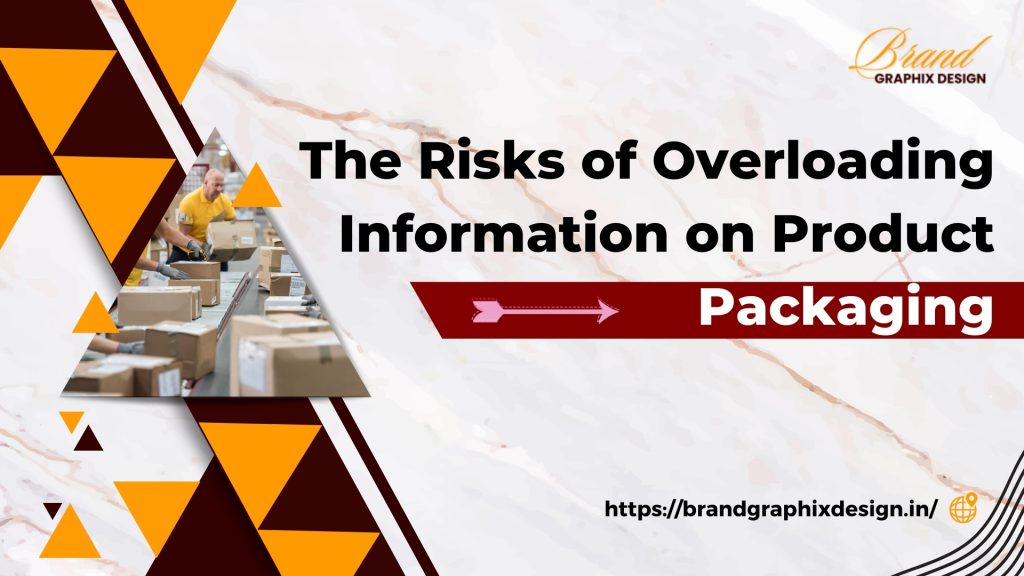Introduction
Product packaging plays a crucial role in attracting customers and conveying essential information about the product. However, overloading information on product packaging can have negative effects, making it difficult for customers to understand the key messages and diminishing the overall effectiveness of the packaging. In this blog, we will explore the risks of overloading information on product packaging and provide tips on how to avoid these pitfalls. Let’s dive in!
Why Packaging Design Matters
Packaging design is not just about aesthetics; it serves several important functions:
- Attracting Attention: Eye-catching packaging can draw customers’ attention on crowded shelves.
- Communicating Information: Packaging provides essential information about the product, such as ingredients, usage instructions, and safety warnings.
- Building Brand Identity: Consistent packaging helps build brand recognition and loyalty.
- Protecting the Product: Packaging protects the product from damage during transportation and storage.
The Risks of Overloading Information
While it is important to provide necessary information on product packaging, overloading it with too much information can lead to several risks:
1. Confusing the Customer
Too much information can overwhelm and confuse customers. When faced with cluttered packaging, customers may struggle to find the key details they need to make a purchasing decision.
Cluttered Design
A cluttered design with excessive text and graphics can make it difficult for customers to focus on the main message. Clear and concise packaging is more effective in conveying information.
Difficulty in Reading
Small fonts and crowded text can be hard to read, especially for customers with visual impairments. Ensure that the most important information is easily readable and prominently displayed.
2. Diluting the Brand Message
Overloading information can dilute the brand message and make it harder for customers to remember the key points. A clear and focused message is more likely to leave a lasting impression.
Inconsistent Branding
Including too much information can lead to inconsistent branding, where the brand identity gets lost amidst the clutter. Maintain a consistent and cohesive design that reinforces your brand identity.
Loss of Key Messages
When there is too much information, the most important messages can get lost. Prioritize the key points you want to convey and ensure they stand out on the packaging.
3. Reducing Aesthetic Appeal
Packaging with too much information can look unattractive and unprofessional. A clean and well-designed package is more likely to attract customers and enhance their perception of the product.
Visual Overload
Excessive text and graphics can create visual overload, making the packaging look busy and unappealing. Strive for a balance between providing information and maintaining visual appeal.
Negative Customer Experience
Poorly designed packaging can lead to a negative customer experience. Customers may associate the cluttered design with a lack of quality and professionalism, which can impact their purchasing decision.
4. Impacting Regulatory Compliance
Packaging must comply with regulatory requirements, such as including specific information like nutritional facts, ingredients, and safety warnings. Overloading information can make it harder to meet these requirements effectively.
Missing Important Details
When packaging is overloaded with information, there is a risk of omitting important regulatory details. Ensure that all mandatory information is included and prominently displayed.
Non-Compliance Fines
Failing to comply with regulatory requirements can result in fines and legal issues. Ensure that your packaging meets all relevant regulations and guidelines to avoid potential penalties.
5. Overwhelming the Design
When too much information is packed onto a product package, it can overwhelm the design, making it look cluttered and messy. This can detract from the overall aesthetic appeal of the packaging.
Minimalist Design
A minimalist design approach can be highly effective. It helps to focus on the key elements and ensures the packaging looks clean and professional. Less is often more when it comes to design.
Strategic Use of Space
Use space strategically to highlight the most important information. Avoid filling every inch of the packaging with text or images. White space can be a powerful design element that improves readability and focus.
6. Misleading Customers
Overloading information can sometimes lead to unintentional miscommunication or misleading claims, which can harm your brand’s reputation and lead to customer dissatisfaction.
Clear and Honest Communication
Ensure that all the information on the packaging is clear and accurate. Avoid making exaggerated claims or including unnecessary details that could confuse or mislead customers.
Focus on Transparency
Transparency builds trust. Clearly state the benefits and features of the product without overwhelming the customer with too much information. Highlight the most relevant details that matter to your audience.
7. Neglecting Visual Appeal
While providing information is essential, neglecting the visual appeal of your packaging can reduce its effectiveness. A visually appealing design can attract customers and enhance their overall experience with your product.
Balance Information and Design
Strive to balance the amount of information with the visual design. Use graphics, icons, and colors to make the packaging more attractive while ensuring the necessary information is easy to find and read.
Professional Design Services
Consider working with professional designers to create visually appealing packaging that effectively communicates your brand message. Designers can help you achieve a balance between information and aesthetics.
8. Neglecting the Unboxing Experience
The unboxing experience is an important aspect of customer satisfaction. Overloading packaging with information can detract from the unboxing experience, making it less enjoyable for customers.
Create an Enjoyable Unboxing Experience
Design packaging that enhances the unboxing experience. Use attractive and engaging packaging that makes customers excited to open and use the product. A positive unboxing experience can lead to repeat purchases and customer loyalty.
Personal Touches
Add personal touches to the packaging, such as thank-you notes or small surprises. These can enhance the unboxing experience and create a memorable impression on customers.
9. Impacting Sustainability
Overloading packaging with information can lead to larger packaging sizes, which can impact sustainability efforts. Sustainable packaging is becoming increasingly important to consumers.
Eco-Friendly Packaging
Consider using eco-friendly packaging materials and designs. Reduce the size of the packaging by focusing on essential information and eliminating unnecessary details. Sustainable packaging can attract environmentally conscious customers and enhance your brand image.
Minimalist Approach
A minimalist approach to packaging design not only reduces waste but also creates a clean and modern look. It demonstrates a commitment to sustainability and resonates with eco-conscious consumers.
10. Limiting Creativity
Overloading information can limit creativity in packaging design. Creative packaging can make your product stand out and leave a lasting impression on customers.
Encourage Creative Design
Encourage creative design by focusing on the most important information and allowing designers the freedom to explore innovative and unique packaging concepts. Creative packaging can capture attention and differentiate your product from competitors.
Unique Packaging Solutions
Explore unique packaging solutions that reflect your brand’s personality and values. Consider using innovative materials, shapes, and design elements to create a memorable packaging experience.
Tips to Avoid Overloading Information
To create effective and appealing product packaging, it is essential to avoid overloading it with information. Here are some tips to help you achieve this:
1. Prioritize Key Information
Identify the most important information that needs to be communicated to the customer. Focus on these key points and ensure they are prominently displayed on the packaging.
- Product Name and Logo: Ensure that the product name and logo are easily visible and stand out on the packaging.
- Key Benefits: Highlight the main benefits of the product to attract customers’ attention.
- Usage Instructions: Provide clear and concise usage instructions to help customers use the product effectively.
2. Use Visual Hierarchy
Visual hierarchy refers to the arrangement of elements on the packaging to guide the customer’s eye and emphasize the most important information.
- Size and Placement: Use larger fonts and prominent placement for key information to make it stand out.
- Color and Contrast: Use contrasting colors to highlight important details and create visual interest.
- Icons and Graphics: Use icons and graphics to convey information quickly and visually.
3. Simplify the Design
Simplicity
is key to effective packaging design. Avoid clutter and focus on a clean and minimalist design that highlights the essential information.
- Limit Text: Keep text to a minimum and use bullet points or short sentences to convey information clearly.
- White Space: Use white space to create a balanced and uncluttered design that is easy on the eyes.
- Consistent Layout: Maintain a consistent layout and design across all your packaging to reinforce your brand identity.
4. Use QR Codes and Links
Instead of including all the information on the packaging, consider using QR codes or links to direct customers to additional details online.
- QR Codes: Place QR codes on the packaging that customers can scan to access product information, usage instructions, or promotional offers.
- Website Links: Include links to your website or social media pages where customers can find more information about the product.
5. Conduct User Testing
User testing can help you understand how customers interact with your packaging and identify any areas of confusion or information overload.
- Feedback Sessions: Conduct feedback sessions with a sample group of customers to gather their opinions on the packaging design.
- Usability Testing: Observe how customers use and interpret the information on the packaging to identify any pain points or areas for improvement.
6. Collaborate with Designers
Working with professional designers can help you create effective and visually appealing packaging that avoids information overload.
- Expertise: Designers have the expertise to create visually balanced and aesthetically pleasing packaging that communicates the key messages effectively.
- Creative Solutions: Designers can provide creative solutions to present information in a clear and engaging manner.
Examples of Effective Packaging Design
To inspire your packaging design, here are some examples of brands that have successfully avoided overloading information on their packaging:
Apple
Apple is known for its minimalist packaging design. The packaging for their products is clean, with a focus on the product image and key information. This approach creates a premium and sophisticated look.
Innocent Drinks
Innocent Drinks uses a playful and simple design for their packaging. The key information, such as product name and ingredients, is clearly displayed, while the overall design remains clean and uncluttered.
Method
Method’s cleaning products feature minimalist packaging with a focus on the product’s benefits and eco-friendly attributes. The use of color and simple graphics enhances the visual appeal while keeping the information clear and concise.
Avoiding the risks of overloading information on product packaging can help you create effective and attractive packaging that resonates with your target audience. By prioritizing key information, using visual hierarchy, simplifying the design, and conducting user testing, you can ensure that your packaging effectively communicates your brand message. If you need assistance with designing your product packaging.
feel free to contact us at +91 91189 11171 or send us a WhatsApp message for expert advice and support.




